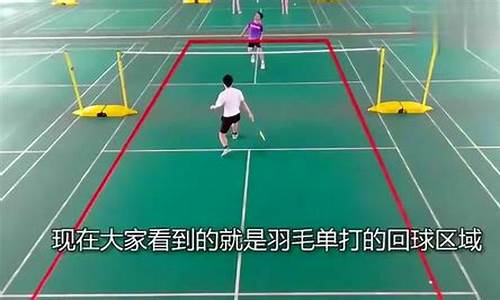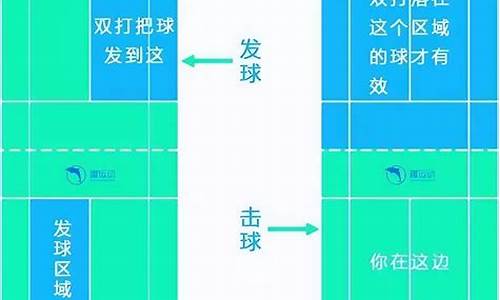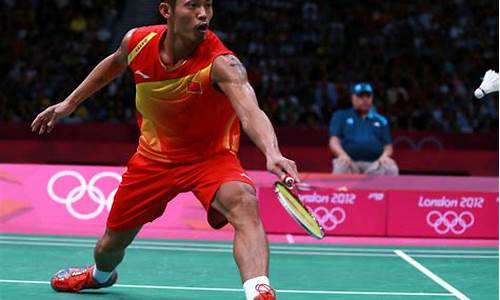您现在的位置是: 首页 > 体育报道 体育报道
羽毛球的规则基本知识英语_羽毛球规则 英语
ysladmin 2024-05-20 人已围观
简介羽毛球的规则基本知识英语_羽毛球规则 英语 希望我能够为您提供一些关于羽毛球的规则基本知识英语的信息和知识。如果您有任何疑问或需要进一步的解释,请随时告诉我。1.关于打羽毛球的英语翻译2.哪位英语高手用英语简介一下
希望我能够为您提供一些关于羽毛球的规则基本知识英语的信息和知识。如果您有任何疑问或需要进一步的解释,请随时告诉我。
1.关于打羽毛球的英语翻译
2.哪位英语高手用英语简介一下羽毛球?
3.羽毛球规则中英互译

关于打羽毛球的英语翻译
1.羽毛球教练 coach
2.在羽毛球馆 Venues
3.发球线 service line
4.双打线 side line for doubles
5.单打线 side line for singles
6.边线 side line
7.底线 base line
8.网前
9.中场
10.后场
11.小球 hairpin shot
12.高远球 lob
13.触网
轻打 flick。 封挡 block 违例 fault
扣杀kill 高球 clear 扣球 smash 击球犯规 foul hit
平抽球 drive 轮换roation
哪位英语高手用英语简介一下羽毛球?
BADMINTON 羽毛球
abnormal flight (球)飞行不正常
accuracy of placement 落点的准确性
ace ①得分球②打得漂亮的球③直接得分的发球
alley ①单打边线和双打边线之间的细长地带②单打端线和双打端线之间的细长地带
alternate courts 交换发球区
alternate in serving ①换发球②双打中一方轮流发球
anchor fingers 紧握球拍的三指(中指、无名指、小指)
around-the-head stroke 绕头顶挥拍击球
ascent (球)上升
attacking clear 比较平直的高远球
back alley 单打端线和双打端线之间的细长地带
back boundary line 端线(单打后发球线)
backcourt 后场
backcourt boundary 端线
backcourt player 后场球员
backhand 反拍
backhand court 左场区
backhand grip 反手握法
back room 端线外的空地
backswing 往后撤拍(准备击球)
badminton 羽毛球运动
balk 发球时一方扰乱对方
band 网顶白布条
base 中心位置
base line 端线
basic strokes 基本技术
bat ①球拍②击(球)
battledore 羽毛球拍(旧称)
battledore and shuttlecock 羽毛球运动(旧称)
broken shuttle 坏球
carrying 持球
centre line 中线
change courts 交换场地
change ends 交换场地
change service courts 互换左右发球区,互换方位
choice of court ends or service 选择场地或发球权
choice of “setting” 选择“再赛”权
clear 高远球
combination court 单打、双打合用的球场
cork base (球)底托
corners of backcourt 后场两角
court 球场
court-covering 守住全场
cross-court ①斜线②斜线球
crown of feathers 羽毛圈
cut 切球
deception 假动作
decoying tactics 引诱战术
deep high service 发高远球
deep shot 深球(打到对方端线附近的球)
delivery of service 发球动作
descent (球)下降
deuce 局末平分(如男子单打的13平)
diagonal system (双打)斜对角配合打法
diagonal teamwork (双打)斜对角配合打法
double hit 连击
doubles court 双打球场
doubles service court 双打发球区
doubles service line 双打发球线
draw (用故意留出空当等办法)引诱对方进攻
drive 平抽球
driven clear 平抽高球
driven service 发平球(比高远球要低些)
driver 善于抽球的队员
drop shot 吊网前球
end 半场
even number of points 双数分数
face of racket 拍面
facet 八角形拍把上的一个平面
fault ①失误②犯规
faulty serving 发球违例
feather 羽毛
feather tip 羽毛顶尖
fingering the grip 击球时握指的变动
finishing shot 决定得分的一击
first inning 第一轮,第一次发球权
first server (双打)第一次发球员
flat service 发平球
flexible wrist 灵活的手腕
flick 甩腕击球
flight (球)飞行
foot fault 脚部犯规
forecourt 前场
forecourt player 前场球员
forehand 正拍
forehand court 右场区
forehand grip 正手握拍法
foul hit 击球犯规
frame of racket 拍框
front and back 双打中一前一后的站法
front service line 前发球线
full strike 全力击球
full swing 全力挥拍
game 局
game ball 一局中的决胜分
game bird 一局中的决胜分
game point 一局中的决胜分
get 抢救险球
getter 抢救险球的队员
good return 合法还击
good service 合法发球
grip ①握拍法②握拍的地方
gut 羊肠线
hairpin shot “夹发针”球(在网前贴近地面的轻挑短球)
half-court shot 半场球(对付一前一后防守的打法)
hand-in 有发球权
handle of racket 拍柄
hand-out 无发球权,失发球权
headroom 室内球场上无障碍物的空间
high backhand stroke 高反拍击球
high clear 高远球
hogging the court (双打)抢打同伴的球
home position 中心位置
ice-cream point 一场中的决胜分
in ①有发球权②(球)在界内
inning 一方保持发球权的时间
"in" side 掌握发球权一方
inside side line 单打边线
intercept 截击
kill 扣杀
landing (球)落地
left court 左场区
left court player (双打)在左场区接发球的球员
left service court 左发球区
let 发球擦网后重发
lift 近网挑球
linesman 司线员
lob 高球
long high serve 发高远球
long service 发远球
long service line 双打后发球线
loss of service 失发球权
"Love all ,play!" “零比零,开始比赛!”
love game 一方得零分的一局
love match 一方得零局的一场
low shot 低球
main string (球拍)直线
match 场
match point 一场中的决胜分
mid court 中区
mid court line 中线
miss 击球未中
miss on service 发球时未打中球
mix up 不断变换打法
money bird 一场中的决胜分(西方称法)
net game 网前打法
net man (双打)打网前位置的球员
net play 网前打法
net payer (双打)打网前位置的球员
net post 网柱
net tape 网顶白布条
nylon 尼龙弦
odd number of points 单数分数
one down (双打)失去第一次发球权
one hand (双打开始时)一次发球权
one hand out (双打)失去第一次发球权
one out (双打)失去第一次发球权
one-shotter 只会一种打法的球员
option of "setting" 选择“再赛”权
order of service 发球次序
out ①无发球权②(球)在界外
out-of-hand service 撒手发球法(用手指抓着羽毛,一撒手就将球打出去)
out of position 站错位,离开了基本位置
"out " side 不掌握发球权一方
outside side line 双打边线
overdrive 把球打出对方端线
overhand stroke 高手击球
overhead stroke 打头上球
overrun 接球时跑过头
pace ①球的速度②比赛的速度
pairing (双打)配对
partner (双打)同伴
pass 超身球
passing shot 超身球
pass shot 超身球
place 找落点
place-hitter 善于找落点的球员
placement 落点好的球
placer 善于找落点的球员
plastic shuttle 塑料羽毛球
players’positions 队员方位
play for an opening 促使对方出漏洞的打法
play safe 打保险球
poacher (双打)抢打同伴的球
poaching (双打)抢打同伴的球
poona 羽毛球运动(因此项运动发源于印度浦那而得名)
pop up 近网挑球过高(对方容易扣杀)
preliminary feint (发球时的)假动作
press 球拍夹子
racket 球拍
racket head 球拍前部(包括拍框和拍面)
racket head above the hand 拍框上沿高于手(发球犯规)
racquet 球拍
rally 为争夺一分的往返拍击,一个回合
rear service line 后发球线
receiving side 接发球一方
referee 裁判员
retired side 失去发球权的一方
retrieve 救球
return 还击
return of service 接发球
right court 右场区
right-court player (双打)在右场区接发球的球员
right service court 右发球区
right to serve 发球权
rotation system (双打)轮转配合打法
"rough" (球拍)粗面
round-the-head stroke 绕头顶扣杀
rubber 三打二胜制
runback 端线外的空地
rushing ①冲上网②扑
rush-up ①冲上网②扑
score cancelled 得分无效
second server (双打)第二发球员
"Second server!" (双打)“第二发球员发球!”
serve deep 发深球
serve from the wrong-service court 发球站错方位
serve out of turn 发球次序错误
serve with both feet in a stationary position 两脚立定发球
service ace 发球得分
service court 发球区
service judge 发球裁判员
"Service over!" (单打)“换发球!”
serving above the waist 高于腰部的发球
serving form 发球姿势
serving position 发球位置
serving side 发球方
setting 再赛
"Set 2 points!" “再赛两分!”
set-up 机会球
shaft 拍柄轴
short 短球
short low service 发短低球
short service 发短球
short service line 前发球线
shoulder-high drive 与肩齐高的平抽球
shuttle 羽毛球
shuttlecock 羽毛球
shuttler 羽毛球运动员
side alley 单打边线和双打边线之间的细长地带
side-arm stroke 侧手球
side boundary line 边线
side by side 双打中一左一右的站法
side line 边线
side room 边线外的空地
side stop 场边围栏
singles court 单打球场
singles service court 单打发球区
sliding step 滑步
sling 持球
smash 扣球
"smooth" (球拍)滑面
soft service 发短球
speed of shuttle flight 球的速度
spin a racket 转球拍(抽签方法之一)
spread of the feather 羽毛圈直径
stance 站立姿势
straight 直线球
strike 击(球)
striker-out 接发球的球员
swing of the arm 摆臂
swing of the body 身体旋转
swing of the racket 挥拍
take the net 上网
thought action 经过思考的动作
throat 拍颈
throw 持球
thumb-up 拇指贴把
top and back 双打中一前一后的站法
top line of the net 网的上缘
toss service 抛球发球法
touch the net 触网
trim 缠绕拍线交叉地方的细绳
two 双打队员
two hands 两次发球权
umpire 副裁判
unclean hit 有拖带动作的击球
underhand stroke 低手击球
uneven number of points 单数分数
unsight an opponent 挡住对方视线
up and back 双打中一前一后的站法
variation of shots 打法变化
velocity of shuttle flight 球的飞行速度
well-rounded game 全面的技术
Western grip 西方式握拍法
white tape 网顶白布条
wide 球打出边线
wild shot 乱打,野球
winner 得分球
wooden shot 木球
羽毛球规则中英互译
I INTRODUCTION
Badminton, game for two or four players using lightweight rackets and a shuttlecock, a cork ball fitted with stabilizing feathers. Players hit the shuttlecock back and forth over a net, trying to keep it from hitting the ground. Some people play badminton outdoors on a level grassy area or beach. However, tournament-level badminton is played indoors on a specially marked court.
Badminton’s governing body, the International Badminton Federation (IBF), has about 140 member nations. The IBF estimates that about 200 million people play the game worldwide and that more than 1,000 players participate in international competition. Badminton’s growth accelerated after the game’s debut as a medal sport during the 1992 Summer Olympic Games. China, Denmark, Indonesia, Japan, Malaysia, and South Korea are just a few of the countries where badminton is popular.
II PLAYING AREA
International rules state that an indoor badminton court must be rectangular, with white lines marked on a level wooden floor or on a special mat that is rolled onto a level playing surface. A singles court is 44 ft (13.41 m) long and 17 ft (5.18 m) wide. For doubles, alleys 1 ft 6 in (0.46 m) wide along the two longer sides of the court come into play, making the court 20 ft (6.10 m) wide. Because many shots fly high into the air, there must be clearance of at least 30 ft (9.14 m) above the court. A net stretched across the middle of the court has a top edge set to a height of 5 ft (1.52 m) at the center and 5 ft 1 in (1.55 m) at the posts.
III EQUIPMENT
Badminton rackets weigh between 3.5 and 5 oz (99 and 141 g) and consist of a leather or terrycloth handle; a long, thin shaft; and a stringed area called the head. Official rules limit the total length of a racket to 26.75 in (67.95 cm). The head of a racket measures 11 in (28 cm) in length and 8.6 in (21.8 cm) in width and is strung with synthetic nylon or gut at between 25 and 35 lb (11.3 and 15.9 kg) of tension. Early rackets were made of wood, but badminton rackets are now commonly made of aluminum, boron, graphite, and titanium.
Tournament-quality shuttlecocks, also called shuttles or birdies, weigh 0.2 oz (5.7 gm) and consist of 16 goose feathers that protrude from one side of a ball-shaped cork base. Most shuttles used by casual players are plastic and have synthetic feathers. Both types of shuttles are 2.5 in (6.4 cm) long. When the shuttlecock is in the air, its aerodynamics cause it to spin so that when players hit it, they almost always strike the cork, not the feathers.
IV SERVICE AND PLAY
Play begins with a serve from a service area on the right-hand side of the court to a receiver in a diagonally opposite service area across the net. To serve, the server stands behind the service line and strikes the cork base of the shuttle in an underhand motion. The receiver must then return the shuttle before it hits the ground, and the players hit the shuttle back and forth until one side fails to return it.
Play ends when the shuttle hits the ground on one side of the court or when one player makes a fault, or error, such as hitting the shuttle into the net or out of bounds. Specific faults for servers include striking the feathers of the shuttle first or serving overhand. The receiver can be faulted for not being within the service court, for not having both feet on the floor when receiving, and for moving before the serve is made.
During play, faults include hitting the shuttle into the roof or lights, hitting it through the net, double-hitting or slinging a shot, touching the net, playing a shot by reaching over the net, and allowing the shuttle to hit the player’s body. Unsportsmanlike conduct—such as intentionally distracting an opponent—will also earn a player a fault.
V SCORING AND OFFICIALS
Points are scored when the opponent fails to return the shuttle, hits it out of bounds, or earns a fault. Points only count for the server (or serving side in doubles), so keeping the service privilege is an important part of the game. If the server loses a rally or makes a fault, the service privilege passes to the opponent. In doubles, this immediate loss of service occurs only at the start of the game. After this first loss of service, each team receives two chances to hold serve. When the first teammate loses serve, the partner serves. If the partner loses serve, the opposing team takes over.
In men’s singles, men’s doubles, women’s doubles, and mixed doubles, the first side to score 15 points is the winner. Women’s singles games are played to 11 points. If the score is tied at 14-14 (or 10-10 in women’s singles) a system called setting settles the outcome. The first side that reached 14 (or 10) elects either to play through, meaning that the next side to win a point wins the game, or to set the game to three additional points, meaning that the first side to reach 17 points (or 13 in women’s singles) wins the game. Each badminton match is a best-of-three-games contest. Average matches last about 45 minutes, but professional matches can last more than 2 hours.
Badminton tournaments involve a number of officials. A referee supervises the tournament organization while an umpire controls each match. Aided by a service judge, the umpire keeps score and rules on faults during play. Up to ten line judges rule on whether particular shots have landed in or out of the court.
VI SKILLS AND STROKES
Badminton requires speed, strength, power, agility, and nerve. Players must move quickly from side to side and back and forth, and stamina is important.
There are six key badminton strokes: the serve, drive, net shot, smash, lift (or lob), and clear. To hit these strokes, players use either a forehand or a backhand grip, depending on court positioning. On the forehand the forefinger acts as a lever and creates power and direction for the stroke. For the backhand the thumb creates this power and direction while placed along the back of the handle.
Many players aim the serve toward the centerline of the opposite service box. This technique limits the angle of the opponent’s return shot. Sometimes players use long, high serves to force opponents to the back of the court. Players also make specialty serves, such as flick serves that barely clear the net or drive serves that are hit down the sideline of the service area, to catch opponents out of position.
Once play has started, players tend to hit straight, low-flying shots called drives. When the shuttle remains close to the center of the court, net shots can be a good option. Net shots can be hard-hit or delicate. They are aimed at the front area of the opponent’s court, forcing the opponent to play the shot close to the net.
If the opponent manages to return a net shot, the return must be hit high to clear the net. This gives the player a chance for a smash—the deadliest attacking stroke in badminton. A smash is hit to the floor so forcefully that the opponent has no chance to return the shuttle before it hits the ground. The hardest smash has been recorded at more than 160 mph (260 km/h).
Players also use two looping strokes that knock the shuttle high and deep. The lift, or lob, is an offensive stroke made from the middle or front of the court. This shot sends the shuttle in a high arc above the opponent’s reach, forcing the opponent to the back of the court. The clear is a similar stroke, but it is used for defensive purposes when players find themselves out of position. The high arc gives players time to return to the middle of the court and to prepare for another rally.
VII COMPETITION
Many badminton enthusiasts play in clubs or at local and regional levels. Top players compete in the World Grand Prix series, an international circuit of tournaments sanctioned by the IBF.
The world championships are badminton’s biggest event and are held every two years. The tournament features five competitions: men’s and women’s singles, men’s and women’s doubles, and mixed doubles. The world championships are always preceded the previous week at the same venue by the Sudirman Cup world mixed team championships, where contests between nations are decided by five matches: men’s and women’s singles, men’s and women’s doubles, and mixed doubles.
Two of badminton’s most exciting events are the men’s Thomas Cup and the women’s Uber Cup. These world team championships, which take place every two years side by side at the same time and at the same venue, have continental qualifying rounds. Contests are staged in a round-robin format with knockout finals at both the qualifying stages in February and the grand finals in May. Thomas Cup and Uber Cup contests consist of three singles and two doubles matches.
Other major events are the European championships, held every two years, and the Olympic Games and the Commonwealth Games, both held every four years.
The IBF, located in Cheltenham, England, regulates all these events and is the sport’s governing body. Representatives from Canada, Denmark, England, France, Ireland, The Netherlands, New Zealand, Scotland, and Wales founded the organization in 1934. Today the IBF has about 140 member nations.
VIII HISTORY
Badminton traces its beginnings to a game played thousands of years ago in Asia. The modern form of the sport was refined in Britain, but it is popular in countries all over the world.
A Beginnings
Badminton evolved from a Chinese game of the 5th century bc called ti jian zi that involved kicking the shuttle. A later version of the sport was played in ancient Greece and India with rackets rather than with feet. A similar game called shuttlecock, or jeu de volant, appeared in Europe during the 1600s.
British army officers brought a revised version of the game back to Britain from India in the mid-19th century. In 1873 the duke of Beaufort introduced the game to royalty at his country estate, Badminton House, and the sport became known as badminton. Four years later the Bath Badminton Club was founded. The version played by its members forms the basis for today’s game.
B Growth in Popularity
Badminton soon spread beyond Britain to the rest of Europe and to countries throughout the world. It became especially popular in Asia and North America. The only major change through the years was in playing equipment, as lightweight rackets made of aluminum, boron, graphite, and titanium gradually replaced wooden models.
During and after World War II (1939-1945), American badminton players came to prominence in international play. In the 1940s David Freeman was recognized as the world’s best player. He won seven United States singles titles (1939-1942, 1947, 1948, 1953) and the All-England singles title (1949). He remained unbeaten in singles competition from the age of 19 until he retired at age 33. American-born player Judy Devlin Hashman dominated the women’s game during the 1950s and 1960s; she became a naturalized citizen of Britain in 1970. England’s Gillian Gilks dominated women’s singles, women’s doubles, and mixed doubles play during the early 1970s.
Badminton’s first world championships were held in 1977. Denmark’s Flemming Delfs and Lene Koppen won the men’s and women’s singles titles, respectively. Since then, East Asian nations—primarily China and Indonesia—have dominated professional badminton. In both countries, badminton is as popular as basketball is in the United States or soccer is in Britain. Spectators at matches typically sing, chant, and cheer for their favorite players or teams.
C Recent Developments
Individuals from China and Indonesia have won numerous world championship titles. Men’s singles world champions include Rudy Hartono (1980) of Indonesia and Yang Yang (1987, 1989), Zhao Jianhua (1991), and Sun Jun (1999) of China. Women’s world champions include Indonesia’s Susi Susanti (1993) and China’s Ye Zhaoying (1995, 1997).
The most noted doubles player is South Korean men’s star Park Joo Bong, who won an Olympic gold medal in men’s doubles in 1992 and a silver medal in mixed doubles in 1996.
Denmark is also a badminton powerhouse, with players such as 1996 men’s Olympic gold medalist Poul-Erik Hoyer-Larsen, 1997 men’s world champion Peter Rasmussen, and 1999 women’s world champion Camilla Martin.
The badminton account cent rule formal game,each adoption three bureau two win to make.Each bureau is 21 cent,the each ball get a goal,first get 21 cent win,if dozen to 20 cent,any a square want to win have to outrun 2 cent.Excuse me,,badminton,one ball how many cents ah?
今天关于“羽毛球的规则基本知识英语”的讲解就到这里了。希望大家能够更深入地了解这个主题,并从我的回答中找到需要的信息。如果您有任何问题或需要进一步的信息,请随时告诉我。









